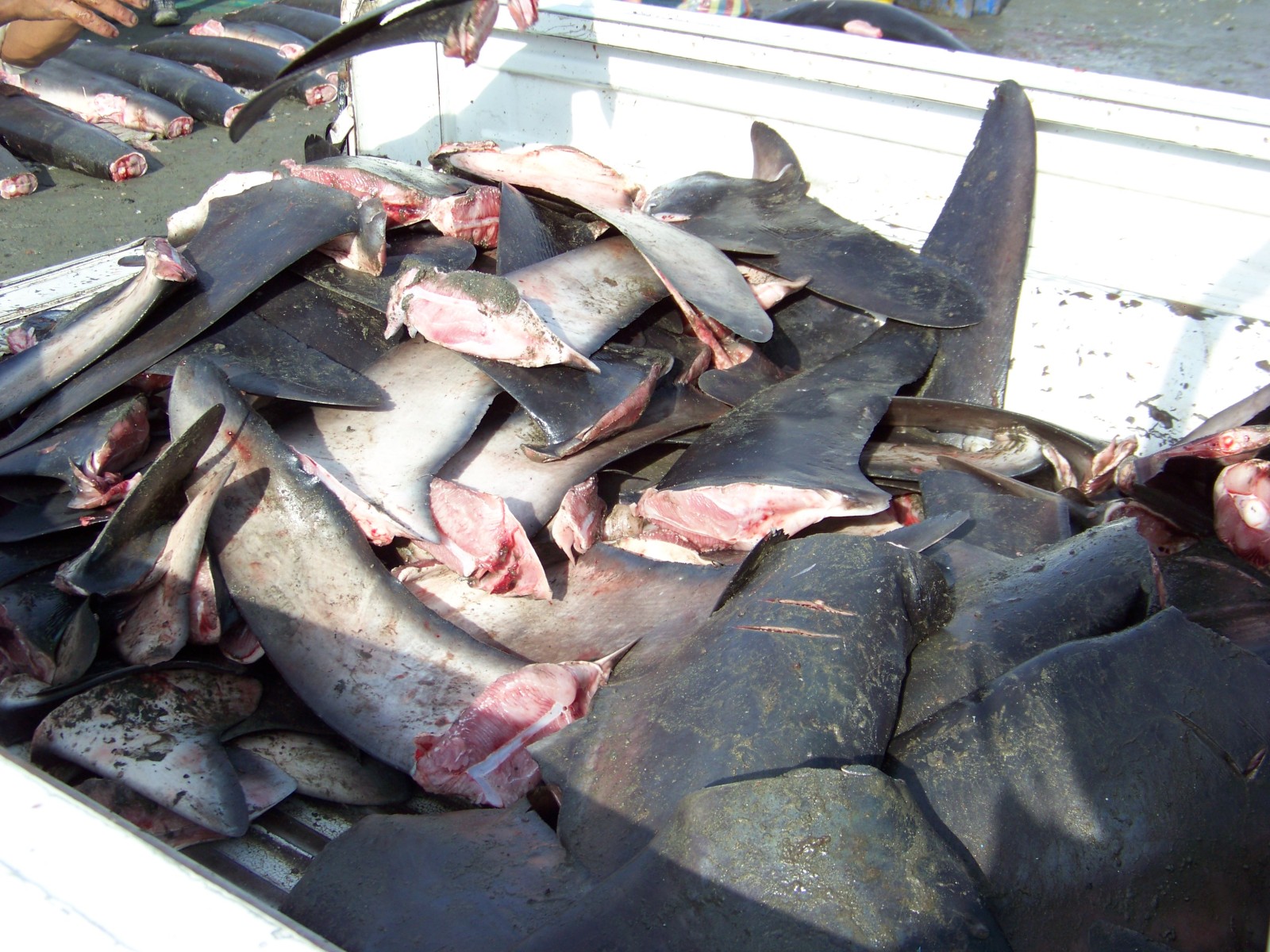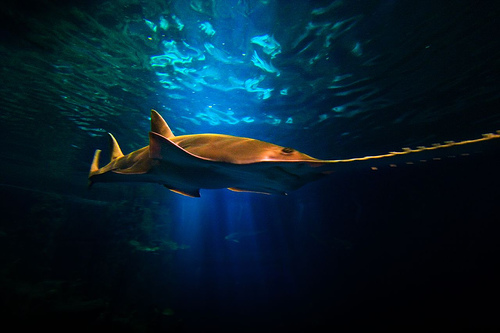Genetic tools to track the shark fin trade
Interview with
A major threat to sharks the world over is the trade in their fins to be made into an expensive delicacy: sharks fins soup. Mahmood Shivji tells us about his work using molecular tools to track the shark fin trade - DNA extracted from a dismembered fin can tell us not only which species it came from but where in the ocean the shark lived. This is providing a powerful tool in monitoring and managing the trade and protecting threatened shark populations.
 It's not just sharks that are targeted by the fin trade - their relatives, the bizarre-looking sawfish, are in even worse trouble.
It's not just sharks that are targeted by the fin trade - their relatives, the bizarre-looking sawfish, are in even worse trouble.
Find out more
Mahmood Shivji
Guy Harvey Research Institute
Save Our Seas,
Sharks International Conference, 2010
Sawfish info from
Elasmoworld
Mahmood - We have some really good quantitative estimates now that tens of millions of sharks are being killed a year to supply the global shark fin trade. And in fact it could be as many as 73 million sharks a year. And that's a staggering number. No one is keeping track of which species and what numbers of each species are being killed worldwide to supply this trade.
The best way currently to get a handle on this type of information is to actually monitor fin markets.
Helen - How do you go from having a dismembered, dried shark fin to developing a genetic tool that's going to help us identify which species it came from?
Mahmood - In a way it's somewhat analogous, although I must add not identical, to DNA methods that are used in human crime cases.
The way we do this, over the past decade or so we've established an extensive reference database of DNA markers for 80 different shark species. We established this by collecting tissue samples with the help of colleagues around the world form wild sharks in the field as well as from sharks that have been landed in fishing ports.
Now we have this database of what are really species-specific DNA markers it's become really quite simple. It's just a matter of getting the fin or the meat from the market, analysing the DNA and then matching up the DNA from this body part to the reference database to identify which species that fin or that body part came from.
Helen - What sort of species have you been working with and what sort of things have your studies been showing us?
 Mahmood - The global fin trade consists of mostly around 50 shark species and you know some species are more common than others. As an example we did a market study with Shelley Clarke at Imperial College in the UK and showed that fins form blue sharks, short fin mako sharks, silky sharks and hammerhead sharks are the most common in the trade.
Mahmood - The global fin trade consists of mostly around 50 shark species and you know some species are more common than others. As an example we did a market study with Shelley Clarke at Imperial College in the UK and showed that fins form blue sharks, short fin mako sharks, silky sharks and hammerhead sharks are the most common in the trade.
But surprisingly we also found fins form white sharks and both these species have small populations worldwide.
It turns out sharks are not the only elasmobranchs whose fins are valued in the fin trade. In fact there is another group called sawfishes. Sawfishes are a type of ray, they're related to sharks. Sawfishes are those rays that have a long nose or rostrum, if you will, that has teeth on it. Sawfish populations have declined worldwide dramatically to a point where all currently six described species urgently need to be protected from fishing. And as a result all known sawfish species are now listed on CITES, with 5 actually listed on CITES appendix I. And what that means is that international trade in these species is now illegal for countries that are signatories to CITES, which is most countries.
Helen - I take it there is still sawfish trade going on if your genetic studies are showing them up in trade?
Mahmood - The most highly valued fins in the trade are actually from sawfishes. Some sawfishes have really large fins and as a result of overfishing, overfishing for the fin trade, as well as habitat destruction sawfishes have really taken the brunt of our overexploitation and their populations have declined tremendously.
Now, the problem is once you have a detached fin it becomes difficult to tell whether it's from a sawfish or whether it's from a legal to harvest shark. So what we've done is develop a quick genetics test that can distinguish fins form sawfishes from fins from other sharks and rays. It's sort of a generic test, it says that fin is from a sawfish and not from a shark or any other type of ray.
The beauty in this test is that it's really, really quick and therefore can be used practically.
Helen - You've also been using genetics to pin down exactly what parts of the oceans they come from. Could you tell us a bit more about that?
Mahmood - What we did was that we actually looked at stock structure of scalloped hammerheads in the North and Southwest Atlantic. And we were able to find a clear genetic signature that would distinguish scalloped hammerheads from the Northwest Atlantic versus the Caribbean versus the Southwest Atlantic. We then went to the fins trade. We first identified fins are being from scalloped hammerheads. We then asked if some of those fins were coming from the Western Atlantic and we were able to match them up.
And the reason that's important is because first of all it's sort of a proof of concept that you can tell not only what species the fin came from but what part of the world that fin came from. And it turns out in the Western Atlantic, scalloped hammerheads are severely overfished, in fact their populations have really crashed. And so the fact that we found fins from overfished populations in the fin trade tells you that there's a direct pathway, a direct channel from the Western Atlantic to Asian markets. And therefore more attention needs to be paid in the Western Atlantic to protect these stocks.
Helen - Because your lab is also working on physically tracking sharks with various types of tags. How is that helping to build up a picture of where sharks move and how they use the oceans?
Mahmood - There's a critical need for migratory pathways of sharks and where sharks give birth and where they mate. One of the best ways to obtain that information is by tracking sharks. By putting on satellite tags, it will allow fine scale tracking of sharks over long periods of time. And what we're hoping to get at is to find first of all if there are specific patterns of migratory corridors, if you will, that individual species are moving along at certain times of the years. That's number one.
Number two is to find out if females are ending up in areas where they give birth. Number three is to see whether both males and females are ending up in certain areas of the world at certain times where they're mating.
If we can find these places, define these corridors, and find these pupping and mating places, then those places can be protected in terms of fishing to make sure that these very sensitive demographic populations are not being fished.
- Previous Critter of the Month - Tiger Shark
- Next The Great Egg Case Hunt










Comments
Add a comment